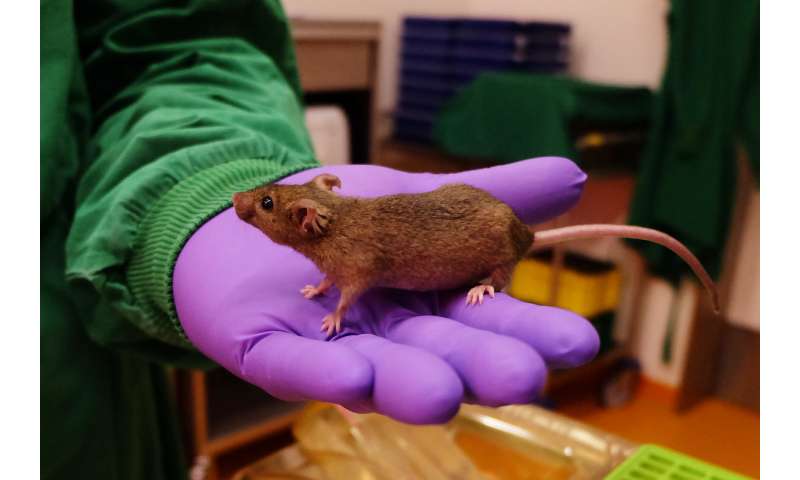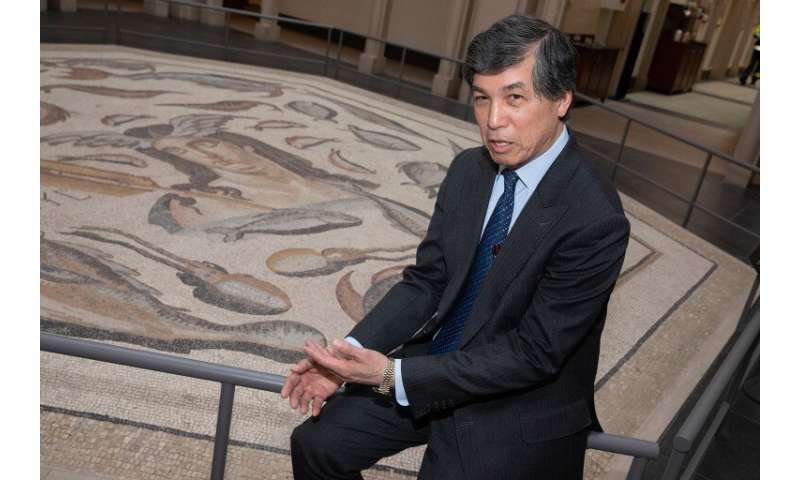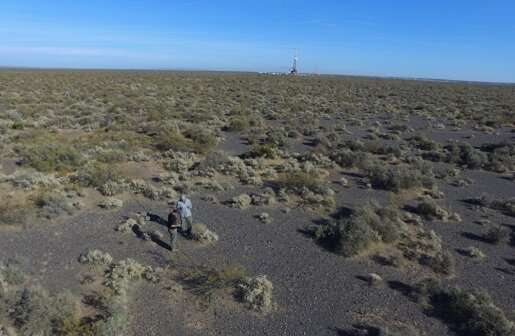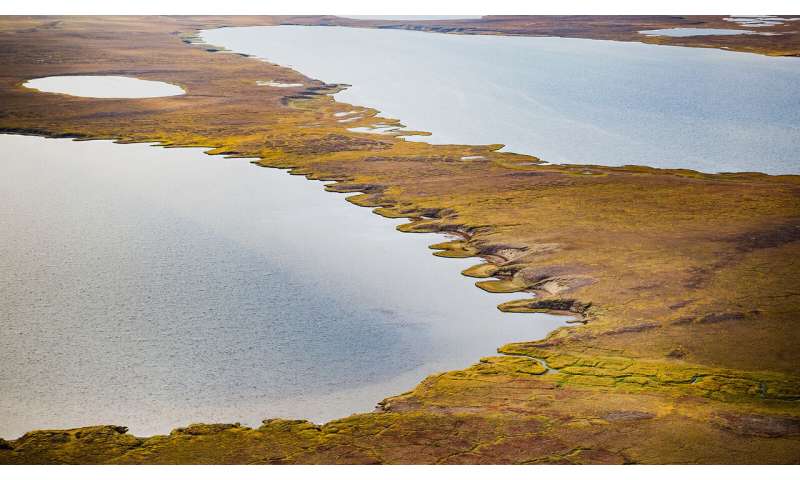The officer for animal research of the Max Planck Society explains new regulations

For the first time, the European Union has published detailed statistics on animal research. Andreas Lengeling, the officer for animal research of the Max Planck Society, explains the backgroud to the new figures.
What are the reasons for keeping more animals at research facilities, than are used in animal experiments?
Andreas Lengeling: There are several reasons. One of the most important reasons is to ensure that animal experiments carried out in basic research are scientifically meaningful. The genetic status of animals is very important in this context. For addressing certain questions, it is often necessary to breed laboratory animals that have a number of genetic characteristics. A classic example would be the breeding of different lines of mice, in order to combine different genetic characteristics in a new line of mice; such as a missing gene, a fluorescent marker for conducting microscopic analyses of particular cells, or an activator/deactivator for a particular genetic activity.
What is the role of genetics in this context?
This type of breeding can be very complex, and it takes place in line with Mendel's laws that describe the biological laws of inheritance. These rules cannot be suspended, so it is inevitable that animals are born, who do not carry all desired genetic characteristics. This is all about statistical likelihood of inheritance. It is therefore necessary that scientists breed more animals than they are ultimately going to need for their actual studies. Smart breeding schemes allow for the number of animals to be reduced to a certain extent. This is where strategies for reducing the number of animals required for breeding take effect. However, it is unfortunately not possible for us to bypass the biological laws of inheritance. In addition to these genetic reasons, there are other reasons for keeping animals that are not directly used in experiments, albeit in much smaller numbers.
To what extent does the age of test animals play a role?
You do need to take the animals' aging process into account. This means that researchers often have to work with narrow time slots when it comes to using experimental and control groups. The immune systems of zebrafish or mice become less effective as they get older, or their immune response might be reduced. As a result they are no longer suitable for addressing certain scientific questions. Strong age homogeneity is necessary to be able to compare datasets from different experimental groups. This means that the animals have to be roughly the same age. Again, this has an impact on the number of animals that need to be bred, and age homogeneity is another important criterion that determines the quality of animal studies.
Are these animals treated differently from test animals?
All animals receive the same attention, nurturing, medical care and so on, as the animals used in actual experiments. As soon as it becomes clear, for example, that mice can no longer be used for further breeding or in experimental studies, they are killed in a painless manner. A number of different research groups at our Institutes cooperate closely, to keep the number of these animals as low as possible, and they also exchange animals if needed.
Are there other animals that are bred and not used in experimental studies?
In addition to the complex breeding process, I should mention backcrossing and the so-called sentinel animals.
Let's first talk about backcrossing: mice, for example, have a very wide range of genetic 'backgrounds." Each particular line of mice differs genetically from other lines, in a way that is similar to different dog breeds. When genetic changes from different backgrounds are brought together, you will get mixed lines. Backcrossing genetic changes into animals with a particular, clearly defined background, is important for making future experiments comparable. Such backcrossing can result in multiple generations of animals, as they represent an intermediate genetic status. An undefined genetic status can give rise to disadvantages with regard to repeatability of animal experiments.
Sentinel animals are the 'guards' of the animal facilities and they are important for ensuring hygienic animal keeping. These animals live alongside experimental animals in their own cages and they are regularly brought into contact with some of the bedding of all other animals, including any pathogens. They are then examined for a range of infectious diseases, by a veterinary medical diagnostics service. This means that sentinel animals can be used as representatives for the health status of the entire colony. So these animals are very important, as they are used for checking and safeguarding the health status of all animals kept in an animal facility. If certain pathogens were not ruled out through such measures, this would not only be a risk to the health of all animals kept in a facility and undetected pathogens can also have a negative impact on research results. Safeguarding scientific quality of research results is key in this context, as well.
Is it not possible to breed in a more targeted manner, and to avoid producing animals that cannot be used in experimental studies? Or to at least reduce the numbers?
There are good, smart breeding strategies, in which sibling animals are taken into account, for example. Careful planning allows us to avoid producing animals that are not directly used in experiments to a certain extent, but not entirely. Unfortunately this is not possible. An experiment must be statistically sound and meaningful at the end of the day, and to achieve this we need suitable animals in suitable numbers.
Is it desirable that a greater effort is made in this direction?
If the Institutes cooperate and enter into an intensive exchange of their experiences regarding the harmonization of strategies, and if technologies that already exist are used more, then it should be possible to do quite a bit more to reduce these numbers.
Which technologies do you have in mind?
Here is an example: there are animals that are merely kept for maintenance breeding. Their breeding is continued, because researchers do not want to loose valuable animals featuring genetic changes or other characteristics. Cryopreservation could be an option here. This means that embryos are frozen in liquid nitrogen, at temperatures below –195°C. If needed, these can be implanted into surrogate mothers to restart breeding at the time it is required. Another example is in vitro fertilization, where an oocyte and a sperm meet in a petri dish. Sperms and oocytes from the animals that are to be preserved are used here. It works in the same way that is familiar to us from human reproductive medicine. This allows, for example, for time-consuming backcrossing to be sped up so that fewer animals are needed for breeding.
For what purpose do you need to breed mice, for example, with a particular characteristic? Would an approximation of the desired genotype not be sufficient?
With regard to the genetic background, an approximation can lead to problems. For example if researchers do not breed mice for control groups themselves, but buy them from a breeding company. The genetic background might not match, and the microflora might differ. Put simply, there is too much background noise that will compromise precise research results. It is therefore important to pay attention to where the animals come from, and to resort to backcrossing or the technologies mentioned before, if necessary.
Can the CRISPR/Cas9 method help to change genetic information in a more targeted manner, and to thus avoid producing surplus animals?
CRISPR/Cas9 technology, so-called genetic editing, allows for new genetic changes in animals to be achieved quicker and more precisely. A number of steps can be skipped this way and it is, for example, possible to introduce multiple desired genetic characteristics into the genome of founder animals of a mouse line at the same time. However, there is the risk of off-target effects that we are not fully familiar with yet. This is where the gene scissors cut the genetic material in the wrong place. This must be checked very carefully with sequencing, which is the reading of genetic material. I think we should be open for this new method, and my assessment is that this is currently the case in many research facilities.
Can the situation be improved, for example, through national or international cooperation among researchers? If so, how?
That definitely makes sense. A lot can be achieved through institutions such as the European Mouse Mutant Archive (EMMA). Genetically changed lines of mice are collected here and are, for example, archived in bio-archives through cryopreservation, and can be provided to scientists for research purposes on request. This service is used by numerous institutions around the world. EMMA plays an extremely important role for genetic quality assurance, for example. This is essential. It is also important to provide and exchange technology such as cryopreservation and in vitro fertilization.
Do you think of killing animals that are not used in experiments as a 'waste' of life?
I do not think that killing these animals is a waste of life. As mentioned earlier, sentinel animals have a very important function. There is certainly room for further improvement, when it comes to collaboration among institutions. It is important in this context to focus on the issue of reduction in the 3Rs principle. That is to reduce the number of test animals to the necessary, yet statistically sound minimum.
Even if these animals are not needed in experiments, they are still important to the scientific endeavour. They are an essential part and not a waste. They are especially important when it comes to breeding with different genetic changes.
Are you happy with the current severity categories for animal testing?
A different classification system for laboratory animals should be considered with regard to the degree of severity, in my opinion. In Great Britain, for example, there is another severity category called 'sub-threshold." This refers to animals subjected to pain that is less severe than a pinprick. This severity degree can be used to describe animals that are used only for breeding, for example, but not for actual experiments that might cause them distress. These breeding animals are fine, their genetic characteristics do not come into effect at the intermediate breeding stages, and they receive the same care and attention as all other animals. They are just not immediately needed for animal experiments. This would allow for a clearer distinction and for greater transparency with regard to scientific use of laboratoryanimals. I am very much in favour of introducing this type of category in Germany, too.
In your opinion, what is the role of animal studies in biomedical research?
A lot of basic research is conducted at the Max Planck Institutes. Animal experiments are particularly important in this field, as they provide insights into general biological processes that might also be relevant to human health. As researchers we have a moral obligation. If we want to abandon animal research altogether, we would automatically sacrifice future findings that may revolutionize our knowledge of basic functions of organic and biological systems. In this context it is also important to include primates in research. There are urgent issues, such as brain research, for which non-human primates are essential. They should be used in specific cases, where we need to work very closely to humans. For example in research into particular infectious diseases that cannot be examined in any other animal species, or in basic research conducted on the brain.Animals reduce the symmetry of their markings to improve camouflage


 The image shows a thermokarst lake in Alaska. Thermokarst lakes form in the Arctic when permafrost thaws. Credit: NASA/JPL-Caltech
The image shows a thermokarst lake in Alaska. Thermokarst lakes form in the Arctic when permafrost thaws. Credit: NASA/JPL-Caltech



